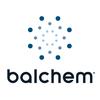Explore all the information on
Dairy cattle health
Welcome to the page about Dairy cattle health of Engormix; a source of knowledge on Dairy cattle health.
The TMR stability of rumen-protected lysine (RPL) products has been previously investigated, albeit without a positive control, potentially introducing bias. The objective of this experiment was to evaluate the TMR stability of 6 RPL products using a modified technique that used an unprotected Lys treatment as a positive control. Triplicate Ziploc bags containing RPL (equivalent of 1 g of Lys), no RPL (negative control) or unprotected Lys-HCl (positive control; 1 g of Lys) mixed with 200 g...
Comments : 0
Recommendations: 1
Cooling the cows through a combination of wetting and forced ventilation is the most common method in the world today. I estimate that more than 80% of the cows that are currently cooled in the world are cooled by this method. Today we know very well what is required to cool the cows properly, in terms of the "wetting quality", air speed and the time required for cooling during the day and throughout the year. In this article, I would like to describe how was developed the knowledge on...
Comments : 0
Recommendations: 4
Heat stress is considered one of the main causes of performance and economic losses in the world dairy sector. These losses are proportional to the degree of heat stress cows are subjected to (days or hours per year, cows are exposed to THI above threshold), as well as to the level of production and some nutritional and managerial practices. Do we really know to quantify the total losses? The answer for the moment is no! The literature published until now deals with most of the...
Comments : 2
Recommendations: 3
According to the Italian website CLALIT, in 2021 the Italian dairy sector accounted for almost 10% of the total EU milk production and 6% of EU milk exports. Italy exports nearly 35% of its milk production, mostly cheese, with high added value to the milk. Italian dairy herd consists of 1.6 million dairy cows, most of them in farms located in the Po valley region, in the north of the country. Milk production in 2021 reached 13.2 billion litres, when per cow annual milk production is 8,300...
Comments : 1
Recommendations: 1


Supplementation with rumen-protected methionine optimized Lys/Met ratio in dairy rations based on alfalfa and corn silage
Suggested link
Mr. Rehmanullah resident of Maina Doug valley is only 10th class passed livestock farmer, has acquired about two Kenal land on rent basis for the establishment of a small scale dairy farm. A compartment 25 feet long, 15 feet wide and 10 feet high has been constructed, having two big windows on one side...
Comments : 0
Recommendations: 0
Today we welcome Dr. Antonello Cannas from the University of Sassari to discuss the diets of small ruminants, specifically sheep and goats. ...
Comments : 0
Recommendations: 0
Mohamed Donia (University of Illinois) Ruminant neonates rely on colostral immunoglobulin and nutrients to support health, welfare, and performance, by protecting against infectious disease and providing early life resilience. Recent evidence suggests that transferred colostral cells also contribute to neonatal immunity under controlled experimental conditions. This study provides evidence that colostral cells enhance neonatal resilience to routine,...
Comments : 0
Recommendations: 0
Brian Aldridge (University of Illinois) Biological health is a complex topic of discussion and is often misunderstood as existing as a binary state in terms of the presence or absence of disease. In many ways, it is useful to explain health at a population or system level as the existence of individuals in 1 of 3 states: those in a healthy condition, those with a prediseased status, and those in a diseased state. At a systems level, it is useful to...
Comments : 0
Recommendations: 2
Summer heat stress is currently one of the biggest causes of economic losses to the global dairy industry, especially in the hot regions of the world. The International Dairy Federation (IDF) decided to deal with the problem and established recently an expert's committee to examine the issue and recommend ways to deal with it at the global level. After being recommended by the Israeli Dairy Board to participate in this committee, I found myself serving in a central role in...
Comments : 0
Recommendations: 2
Mohamed Donia (University of Illinois) talks about the benefits of colostral cells to neonatal lambs' health and welfare, during the 11th Symposium on Gut Health in Production of Food Animals in St. Louis, USA....
Comments : 0
Recommendations: 0


Supplementation with rumen-protected methionine optimized Lys/Met ratio in dairy rations based on alfalfa and corn silage
Suggested link
Brian Aldridge (University of Illinois) shares insights on homeostasis and focusing on the host rather than the disease, during the 11th Symposium on Gut Health in Production of Food Animals in St. Louis, USA....
Comments : 0
Recommendations: 0
Dr. Mubarak Ali, Senior Technical Service Manager Asia South at Evonik Animal Nutrition, speaks about the uniqueness of a Rumen-protected DL Methionine, Mepron®
...
Comments : 4
Recommendations: 2
An article dealing with this topic was recently published in the prestigious journal of the dairy industry, Journal of Dairy Science (Espinoza-Sandoval et. al., JDS 106: 2023). The article examines, using a statistical model, the feasibility of investing in cooling the cows in the summer in various countries around the Mediterranean Sea (Europe, North Africa and the Middle East), where there are different “climate zones” regarding dairy farming. The model presented in this...
Comments : 0
Recommendations: 0
Hylton Buntting from Phileo by Lesaffre speaks about how to reduce carbon footprint in dairy cow farming using a premium yeast probiotic
...
Comments : 1
Recommendations: 0
PhytriCare® IM is a plant-based premix with a high flavonoid content. It has been developed to prevent a too high inflammatory state in sows, laying hens, and dairy cows....
Comments : 1
Recommendations: 0


Supplementation with rumen-protected methionine optimized Lys/Met ratio in dairy rations based on alfalfa and corn silage
Suggested link
Heat stress related production loss, compromised welfare and cattle mortality are global concerns, which are increasing in the context of climate change and increase productivity of the cows. Cattle response to heat stress varies, based on individuality and thermal environment. In this article I intend to describe heat stress monitoring, in individual and herd basis, making use of thermal indices, as well as physiological and behavioral changes occurring in the heat stressed cow. 1....
Comments : 0
Recommendations: 2
Heat stress related production loss, compromised welfare and cattle mortality are global concerns which are increasing in the context of climate change and global warming. To maintain the welfare and performance of livestock, monitoring the effects of climatic extremes is important. Farming systems are becoming increasingly automated and remote/automated monitoring of animals is an ultimate need to overcome the limitations of human observation for continuous characterization of cows...
Comments : 0
Recommendations: 0
Introduction Downer cow syndrome (DCS) is defined as lateral or sternal recumbency that persists for longer than 24 hours [1], or that persists for longer than two weeks despite of treatment [2]. The incidence of this syndrome ranges from 4.5 to 14% [3]. Downer cow syndrome can be seen in all stages of the animal’s reproductive cycle but the majority of all downer cows are diagnosed shortly after parturition. A multitude of metabolic, infectious, toxic, degenerative and...
Comments : 0
Recommendations: 0



.jpg&w=3840&q=75)





.jpg&w=3840&q=75)

.jpg&w=3840&q=75)








